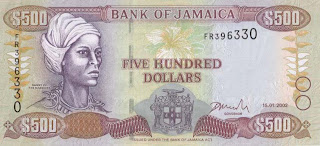TLS, July 13, 2007
from Robert Irwin's review of Ken Jacobson's Odalisques and Arabesques:
*****
from Matthew Peters' review of Peter Brooks' Henry James Goes To Paris:
*****
from Ian Thomson's review of Kenneth M. Bilby's anthropological study "True-Born Maroons":

Image taken from the website of the Gilder Lehrman Center for the Study of Slavery, Resistance and Abolition
*****
from Joshua Marcus' essay on traveling along the Magdalena, the Colombian Mississippi that inspired Gabriel García Márquez:

Map of the Magdalena watershed (picture from Wikipedia)
…Jacobson shows that the history of Orientalist photography begins weeks afer the invention of photography itself. The secrets of Louis Jacques Mandé Daguerre’s method of trapping light were revealed to a joint session of the Académie des Sciences and the Académie des Beaux-Arts on August 19, 1839. Eighty days later, the Orientalist painter Horace Vernet made a daguerreotype of the entrance to the Harem of Muhammad Ali in Alexandria. From the first, the history of Orientalist photography developed in parallel with that of Orientalist painting.
*****
from Matthew Peters' review of Peter Brooks' Henry James Goes To Paris:
In an interview published in 1994, Brooks spoke of the "temptation" of writing a biograpy of a literary figure. Biography, he believed, was "one of the few forms that a literary critic can use, in our culture, to reach a large audience."
*
Brooks contrasts the concentration on surfaces and impressions of Flaubertian narrative techniques with James's commitment to a Balzacian form of representation, which was "less concerned with the details of the real than with what it signifies and connotes, less attached to the surface of things than to what may be suggested and concealed, behind and beneath." Brooks argues that, valuable as these French experimental techniques were to James's own narrative methods, he should be considered a novelist not of impressionism but of "expressionism" -- a term to which Brooks gives the specialized and suggestive definition: "the effort to make surface yield something that is not purely of surface"; a "drama of ethical substance". Flaubert, accordingly, was an intensely provoking and problematic figure for James.
*****
from Ian Thomson's review of Kenneth M. Bilby's anthropological study "True-Born Maroons":
Maroons existed throughout the Carribean (notably in Surinam); according to Bilby, they were named after the Spanish cimarrón, originally used to refer to feral cattle in mountainous Hispaniola. The runaways of eastern Jamaica, tall and athletic Africans transported from the Gold Coast, were led by a Coromantee tribeswoman known as Nanny, who fended off British troops (according to Jamaican legend) by catching cannonballs with her buttocks. A Boadicea figure, Nanny is now a national hero of Jamaica, and her likeness appears on the JA$500 banknote ("Give me a Nanny!" street beggars implore).

Image taken from the website of the Gilder Lehrman Center for the Study of Slavery, Resistance and Abolition
*****
from Joshua Marcus' essay on traveling along the Magdalena, the Colombian Mississippi that inspired Gabriel García Márquez:
The bridge over the Magdalena between Puerto Salgar and La Dorada, a little downriver from Honda, is this Márquezian concentration of time in solid form. As I walked along the east bank, state-of-the-art fighter jets from Palanquero Air Force Base filled my ears with sonic booms. A handful of soldiers armed with M-16s guard the steel-and-concrete-trussed bridge and ordered me not to take any pictures while I walked across it. The Magalena drained Colombia's garbage like a giant gutter beneath me. On the other side, I descended the bank beneath the bridge to an outpost of huts, mud, sunken canoes, and families. They had no electricity or running water and, of course, no boats for sale. I tried to take photographs but a villager warned against it because it is in a military zone. This prohibition was the one thread connecting the two sides. If visual depiction is restricted, perhaps that is why stories are so prevalent.
The two banks are opposite sides not just of a river but also of a century. In between flow all the history, all the stories, the natural and human cycles that have occurred to get from this "godforsaken village whose streets remained flooded even in the crudest droughts" to a military installaton with a twenty-first-century arsenal funded by a nation thousand of miles away...
*
The epigraph to his (Márquez's) autobiography is "Life is not what one lived, but what one remembers and how one remembers it in order to recount it."

Map of the Magdalena watershed (picture from Wikipedia)

Comments